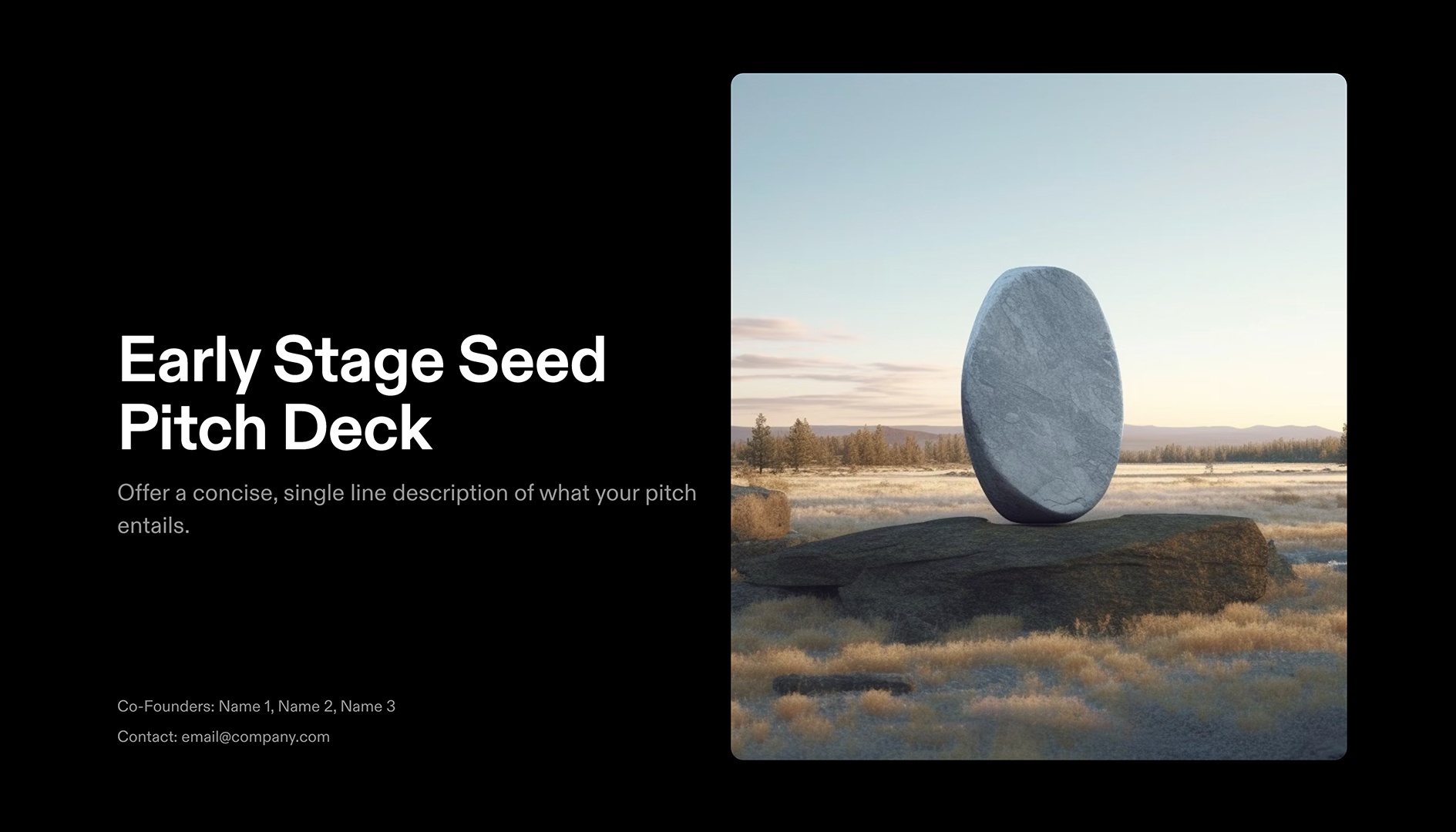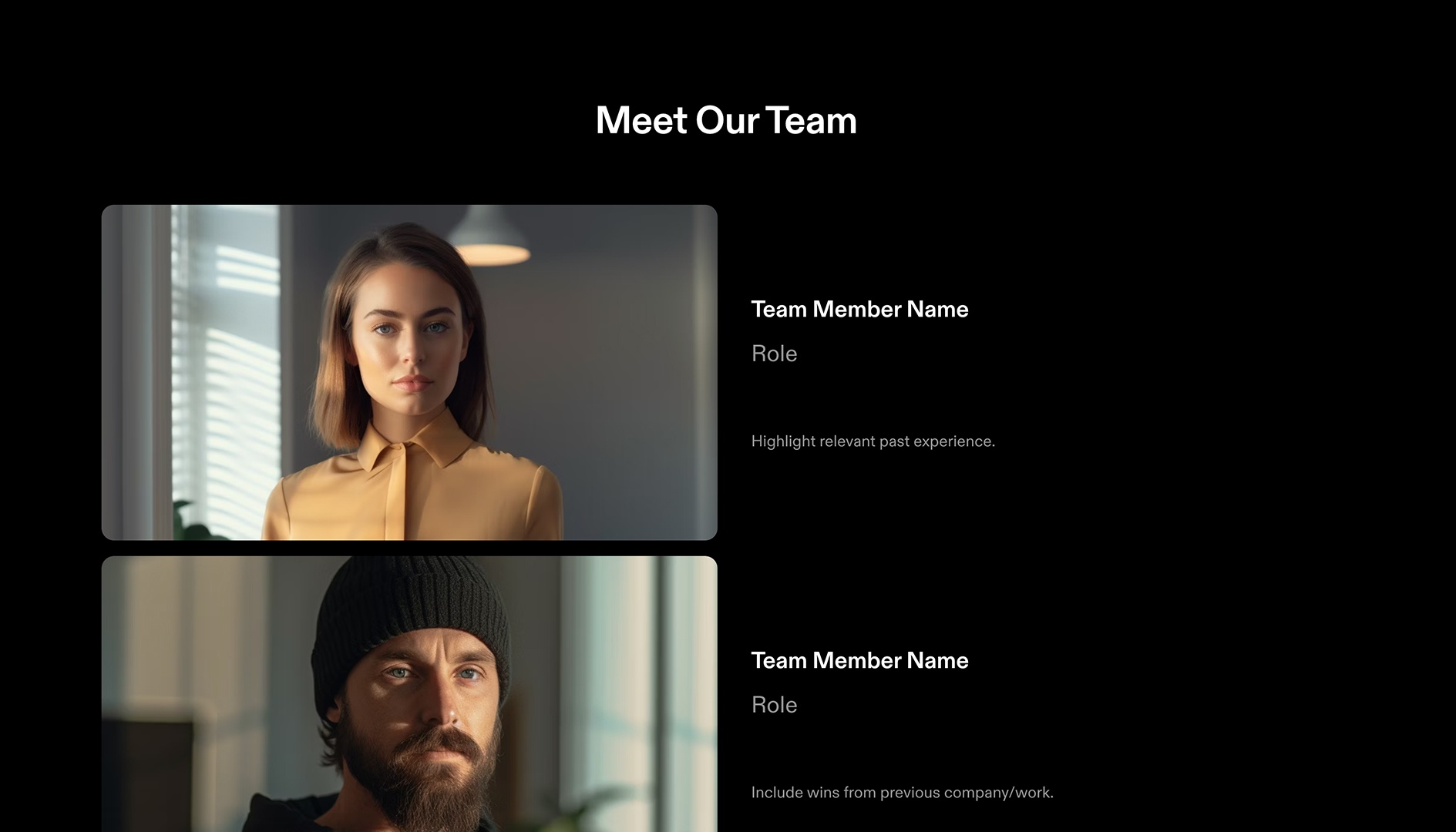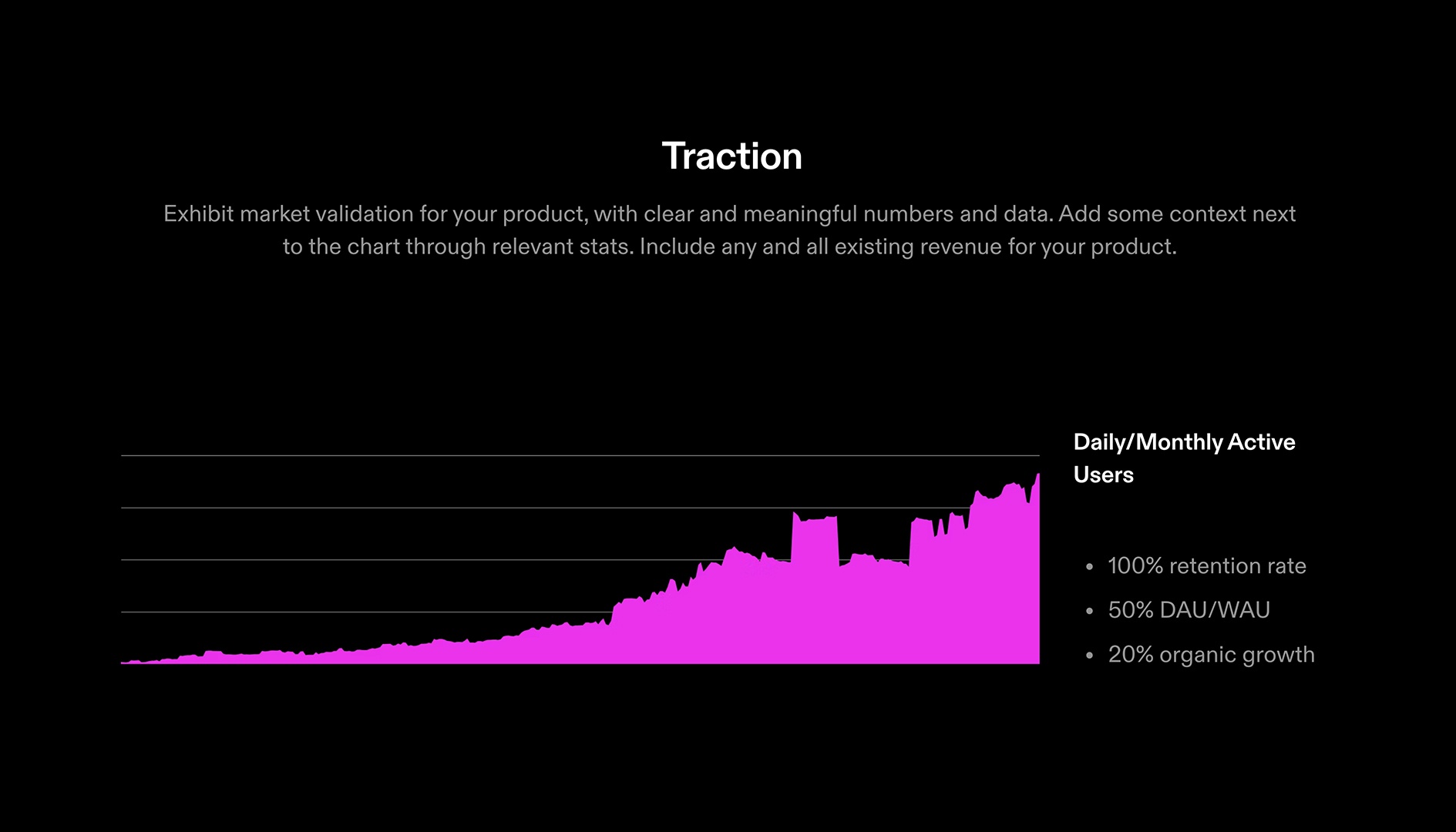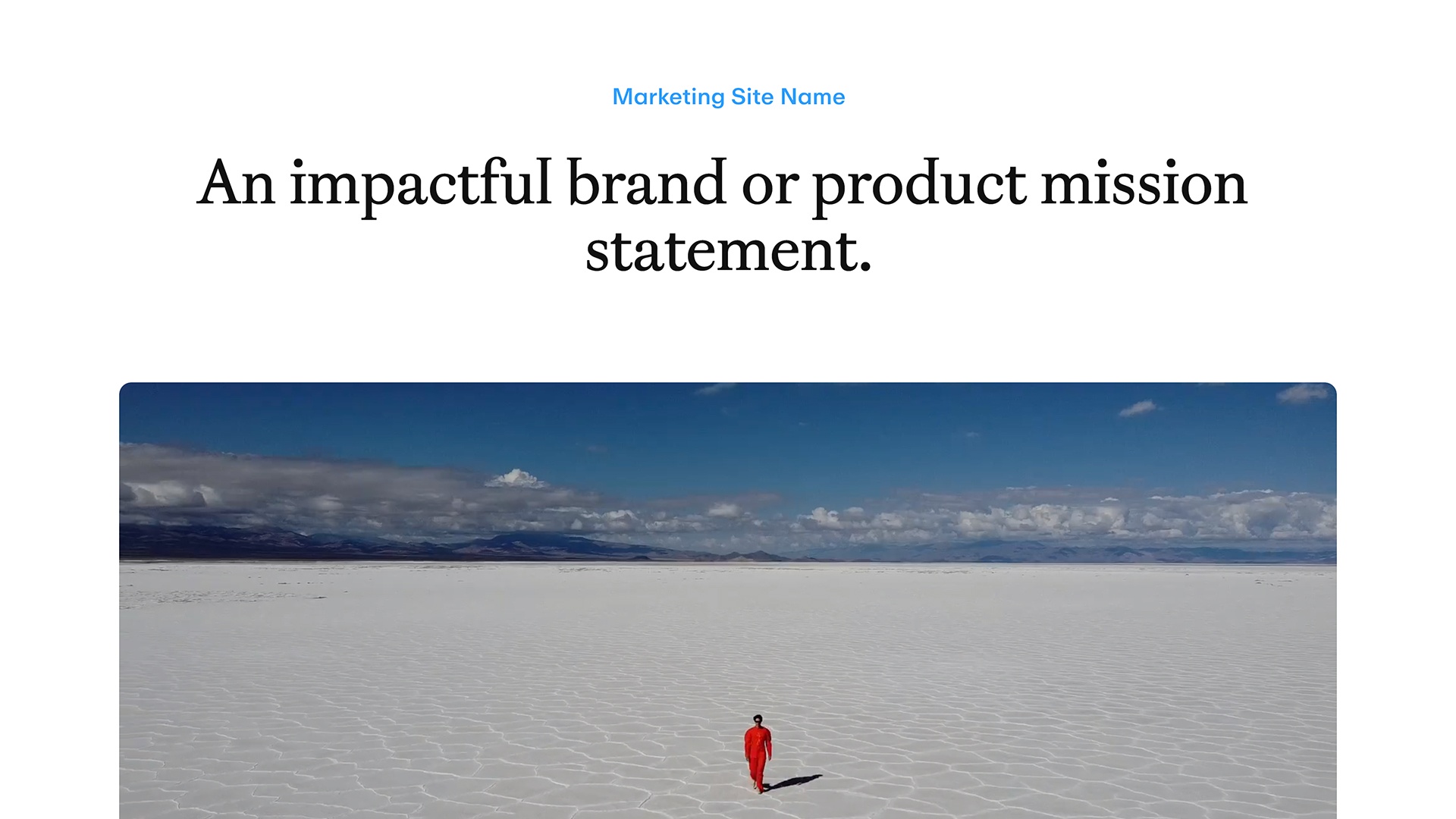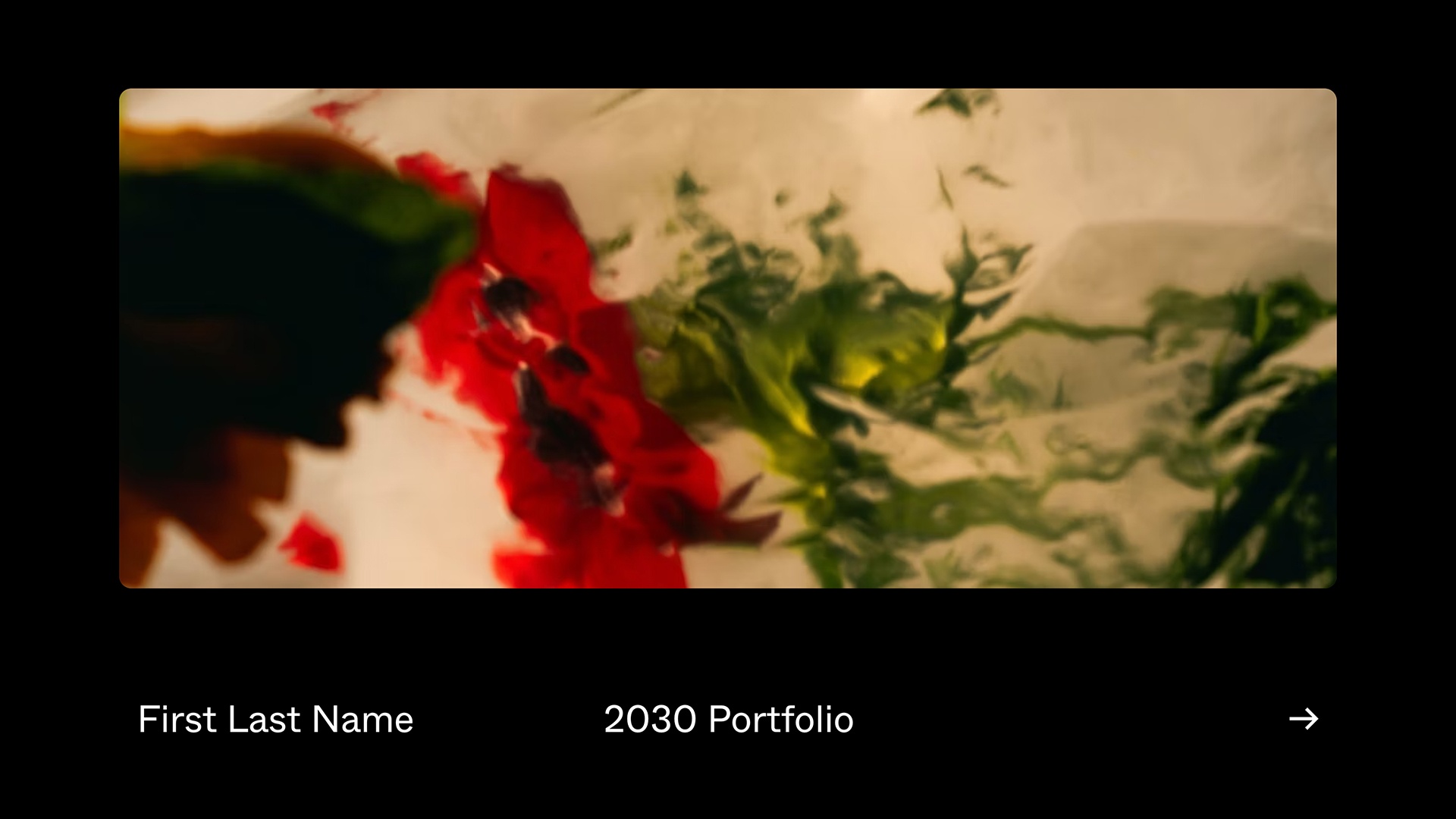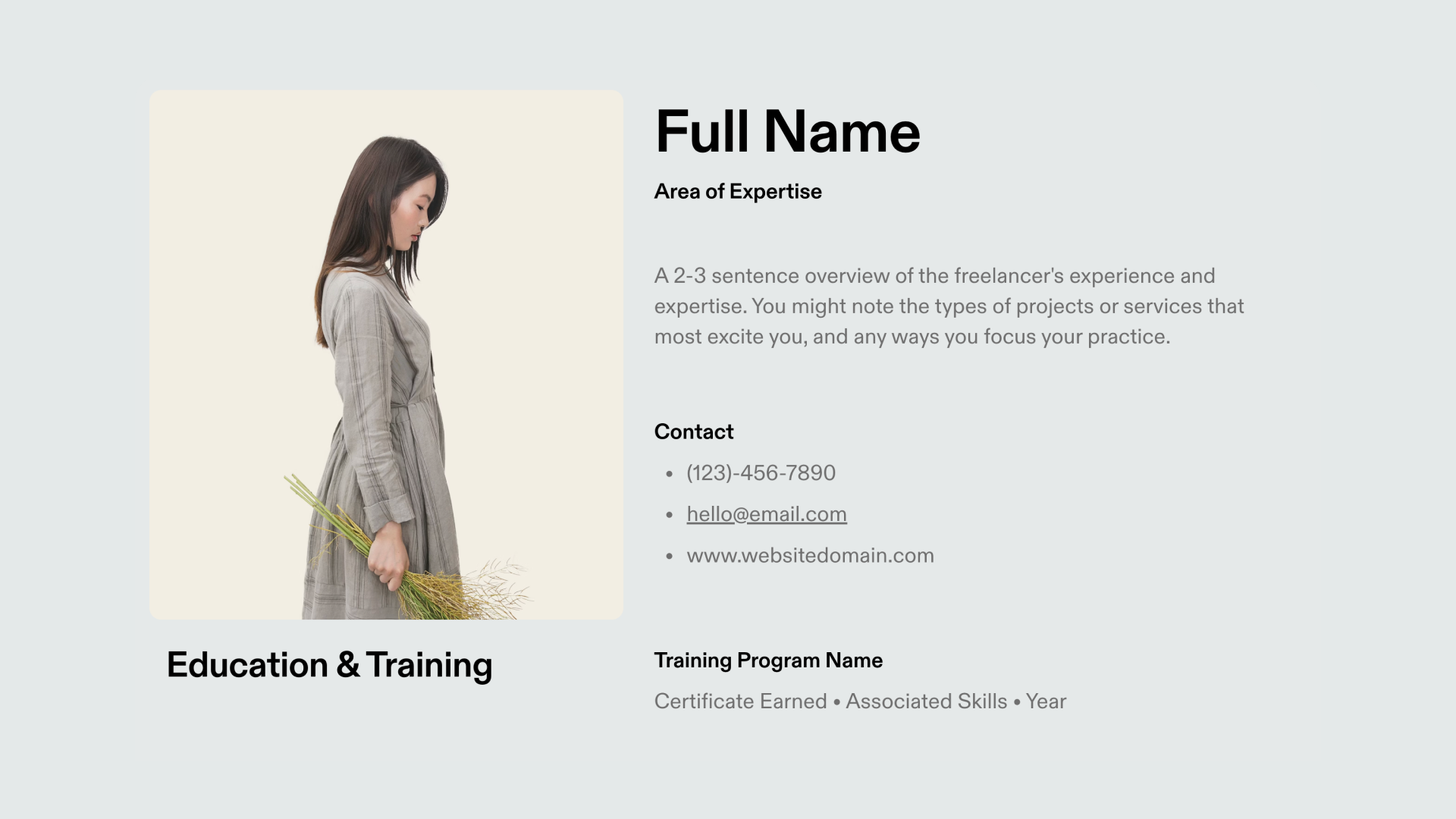Seed Round Pitch Deck
Get your startup off the ground with this early stage Seed Round Pitch Deck template.
About this template
Fund your dreams with Tome’s seed funding pitch deck template, designed to showcase the value of your tech company. This fully-customizable 18-page template walks you through every last detail potential investors and venture capital firms will want to see. Introduce them to the problem and how your product will provide the solution, with plenty of space to show the user journey through your product and the team you’ll build it with. Spare no detail with a revenue overview, including bulleted highlights and illustrative charts, and delve into the market size and the impact your business will have. Add media and images to each page, helping to tell your business’ story and secure your startup's seed stage funding.
Template outline
- Problem statement
- Problem solution fit
- How the product works
- Team Overview
- Company Overview
- Market validation with metrics & data
- Market Size and TAM
- Product differentiation
- Business model
- Competitive landscape
- Seed funding ask & goals
Tell a powerful story
- Editable with AI
- Beautiful typography
- AI layout generation
- AI layout generation
- Automatic mobile layout
- AI reference sourcing
- Share or link anywhere
- Downloadable as a PDF
- Real-time collaboration
Expert Tips
What is the purpose of a seed round?
You’ve already done a huge part of the heavy lifting when it comes to starting a startup—coming up with the idea. Now it’s time to get your seedling of an idea sunlight and water. Enter the world of seed capital. This type of financing is the first and required stage for any startup where private investors provide you with funding to get started on the path to becoming a business.
How do you capture the attention of potential investors? Keep in mind that even though friends, family and close acquaintances are generally the most common demographic making up seed investors, it’s key to present your ideas and vision with polish and professionalism. Pitch decks and presentations are one of the best ways to convey what your startup is about. You can quickly and easily communicate a wide variety of information including market size, metrics, business impact, target customers, product visuals and more. Plus, pitch decks are easily shared.
What should be in a seed pitch deck?
Don’t hold back when it comes to figuring out what to include in a seed pitch deck. This presentation is the visual platform by which potential investors will decide if your idea and business vision has legs.
Review the suggested outline in our Seed Round Pitch Deck template and ensure that you and your team can provide answers and examples to each. Start with crafting a complete problem statement that flows into the problem-solution fit. What is the central issue and challenge that your startup is seeking to address? Explain your solution and ensure you have done the research to back it up.
Let’s walk through the key elements of a seed pitch deck:
- Narrative flow. The narrative should feel almost like a story with a clear beginning, middle and resolution. This includes linking the problem, solution, market, and your unique value proposition in a cohesive narrative. Character arcs in the form of your product or service can absolutely be a part of your startup’s story. Remember that a well-designed deck can also significantly enhance the narrative and make the information more digestible.
- Problem-solution fit. Founders are seeking to solve a common problem or ease a challenge that has yet to be solved with their startup, and getting to that solution is an evolutionary process that can take twists and turns along the way. It’s also beneficial to highlight why now is the right time for your solution. Laying these out within the pitch deck shows self-awareness and attention to detail.
- Product description. Giving an overview of how your product or service operates is a crucial characteristic of a solid seed pitch deck. Whether you’re sharing a full video or instructional step-by-steps, it’s important that your investors understand clearly what the differentiated value your startup provides so they can invest with confidence.
- Product differentiation. What makes your startup unique and your business objectives relevant? In a hotly competitive landscape, founders more than ever need to ensure that their pitch decks address their prospective customers’ pain points and fully communicate a comprehensive plan that is clear, cohesive and shows clear impact.
- Team introduction. Investors often invest in people as much as ideas. A section introducing key team members, their expertise, and why they're the right people to lead this venture can be very persuasive.
- Key proof points. Including key proof points or examples such as customer success stories, how-to instructional guides or tutorials that are short and digestible; consider including detailed context such as hypotheses that you and your team have tested out or solved, thoughtful research showing any competitors or disadvantages that your startup acknowledges and will overcome. The more detail and nuance you provide in your pitch deck, the more likely it is that your seed funding rounds will come through.
- Market size and TAM. Be sure and have a strong sense of your market size, growth trends, and competitive landscape. Detail with data and metrics to back up your proposal and emphasize your product’s potential for expansion.
- Seed funding goals. Round out your presentation with a clear expression of your seed funding asks, your objectives and goals, and provide space for questions and commentary. Best of luck.
How do you make a pitch deck for seed funding?
- Visual design and layout principles. Practice good presentation hygiene when it comes to visual design and layouts. Never bombard your audience with walls of text or forests of bullet points, or overwhelm potential investors with confusing eye-charts of data. Instead, use high-quality images and graphics that effectively convey complex ideas.
- Custom branding. Use custom branding if you have themes, colors, typography and logos in place. Keep design elements consistent throughout your deck to ensure a cohesive and professional look.
- Content clarity and brevity. Keep your ideas simple, concise and keep them to one per page whenever possible. People start to lose focus if there are too many concepts, ideas or solutions presented.
- Data presentation. If you have data and metrics, keep the numbers succinct and use simple charts and tables to maintain organizational readability and flow.
- Audience understanding. Know your audience and adjust your messaging accordingly. Conduct some research on your potential investors’ interests and investment history. This knowledge can help tailor your pitch to resonate more with their values and interests.
What is the difference between a seed and a Series A pitch deck?
The main objective in this first official stage of a startup’s financing round is to build upon its initial foundation of funding. Put simply? Get more financing. The ultimate goal from there is to get your startup to the Series A stage where you’re ready to execute your vision at scale.
For a seed startup, it’s not necessary to nail your product-market fit or financials perfectly. The focus is often on the concept, the problem being addressed, and a proposed solution. Your business model may also need some fine-tuning or the precise details of your business model aren’t fully fleshed out either. You can do both of these things in the Series A stage.
Polished pitch decks are required for both of these stages with the added requirement of a Series A pitch deck—demonstrate that your business is repeatable. In other words, you must show investors that your customers and users will continue to use your product or service. If they stop, this is what’s known as ‘churning out,’ your business is not yet considered repeatable.
How long should a seed pitch deck be?
In our fully editable and customizable Seed Round Pitch Deck template, you have 18 pages to work in all your content. You may want to consider reducing the length of this template and follow the 10/20/30 presentation rule: 10 slides, 20 minutes to present, no font smaller than 30 points.
Remember our earlier recommendation? Think of your pitch deck as if it’s a story with a beginning, middle and clear resolution. You want to captivate and engage your audience, not bore them or confuse them. People are likely more interested in hearing a story that they have an emotional connection with and are also more likely to remember them. Stand out above the competition and craft a narrative that shines.
If you know what your business model is at this stage, explain it concisely and clearly. Do the same for the solution portion of your pitch—what do you want your audience to walk away remembering?
Of course, practice makes perfect so ensure that you are investing the proper time and energy into rehearsing your pitch. How the story is told is as important as the story itself. Practice not just the verbal delivery but also the pacing, transitions, and handling of potential questions. Oftentimes, you’ve got one shot to impress so make it count.
What makes a seed stage pitch deck stand out?
Your startup’s pitch deck is a tangible opportunity to realize a dream and tell a story. Drawing your audience in and getting them excited enough by your vision to engage and invest in your dream requires particular attention to all aspects of telling a good story. You need a hook, a challenge or problem that can only be solved by you and your team, and a compelling reason for why it needs to be solved now.
The ability to stand out above your competitors with a polished, elegant and professional presentation is simple and achievable. You don’t have to be a designer by trade to tell a visually compelling story that engages, delights and educates.
Tome’s AI-powered Seed Pitch Deck template offers a wide range of beautiful typography, themes, and colors that can be customized, and includes the ability to save pre-designed themes. This template’s layouts are mobile-responsive so that your pitch deck looks just as crisp and beautiful on a potential investor’s phone as it does on desktop–a key characteristic that can help broaden the reach of your pitch.
Sharing your pitch or linking anywhere to anyone does just that. You can also participate in real-time collaboration and download your tome as a PDF for additional flexibility and accessibility.
“I measure production value as the amount of effort x the quality that comes out. Tome has some of the highest production value I’ve ever experienced.”


For examples of other successful startups using Tome to express their vision, check out Supernormal and our other founders on the Success Spotlight page of our blog.
